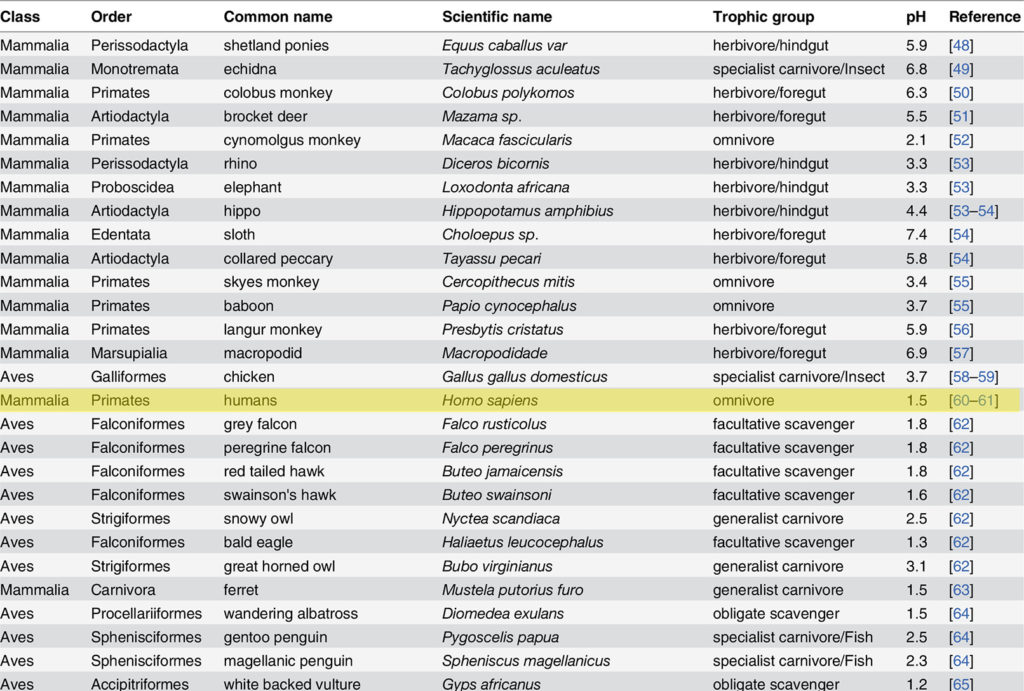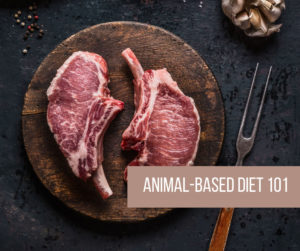Are humans carnivores? The answer is, yes.
Without continuous access to meat, it is highly unlikely for humans to evolve to our unusually large and complex brains. Nor would we become the intelligent and dominant creatures that travel to space, debate politics, and question what kind of food is optimal for our species.
Perhaps the big irony is, our meat-fueled brain led us to develop farming and agriculture that derailed us from our proper diet. Other animals don’t have to take nutrition classes. They just instinctively eat what fuels them best. As humans, however, we have lost our primal instinct. With processed food, sugar, and excess carbohydrates, we can no longer distinguish between foods that gives us instant gratification and foods that truly nourish us in the long run.
Eating a carnivorous, animal-based diet is the first step to restoring our health and unlocking our potentials. But don’t just take my word for it. In this article, I will provide research and supporting evidence to show you why humans are evolved to eat an animal-based diet.
What Is A Carnivore?
The popular belief is that humans are omnivores. While it is true that we can survive on both plant and animal foods, it doesn’t necessarily mean that an omnivorous diet is the best for us. For example, well-known herbivores like cows and deer will sometimes munch on bones from carcasses or baby birds in the wild. This is because when the preferred food source is scarce or unavailable, animals will resort to whatever food they can have in order to survive. But that doesn’t mean that cows are omnivores, or an omnivorous diet is good for them.
Same as humans – our ability to survive on plants is an advantage. It can carry an us through periods when the “preferred” food is scarce. But to call humans omnivore implies that an omnivore diet is good for us and that we are just as happy and healthy eating anything. That is simply misleading. To raise an extreme example, we can survive on eating Cheetos alone, but we will become undernourished, mentally and physically ill. It’s certainly not how we want to live. We don’t want to merely survive; we want to thrive. There is a big difference.
So, in this article, we’re not basing the proper human diet on what we can eat, but on what we should eat.
So What Should We Eat?
The short answer, again, is meat and fat.
Wait, but didn’t we evolve from the great apes that are herbivores? While humans evolved from primates that consumed substantial amounts of plant foods, the human evolution diverted from chimpanzees about 6 million years ago when our ancestors abandoned living primarily in the trees for open grasslands. Since then, our predecessors went on a different evolutionary path and developed multiple adaptations to eating meat.
Our Massive Brain
One of the biggest distinctions between humans and our chimp ancestors is our brain size. Throughout 60 million years of primate evolution, the primate brain size stayed fairly constant at about 350 cubic centimeters (cc). However, something incredible happened around 2 million years ago – our brain size started to grow rapidly, quadrupling to an apex value volume of 1600cc about 40,000 years ago. Bigger brains allowed us to increase the complexity of our cerebral cortex, develop more intelligence, and eventually led us to the dominant species we are today.

So, what happened? How were we able to supercharge our brain growth? No one knows for sure. But archeological studies have found evidence showing the first signs of using stone tools for hunting and butchering around 2.5 million years ago. There is evidence of hominoid meat consumption prior to that time, but back then our ancestors were mostly scavengers. They only had access to leftovers from parts of carcasses (like bone marrow and brain) other predators left behind. This changed around 2 million years ago when we started to transition from scavengers to hunters. According to this article on History.com, the distinguishing market of the hunter-gatherer culture is the active killing of animals for food:
Hunter-gatherer culture developed among the early hominins of Africa, with evidence of their activities dating as far back as 2 million years ago. Among their distinguishing characteristics, the hunter-gatherers actively killed animals for food instead of scavenging meat left behind by other predators and devised ways of setting aside vegetation for consumption at a later date.
The transition from scavengers to hunters means that our ancestors no longer have to eat the leftovers. They finally had access to all the muscles, organs and fats from their preys. Meat provided abundant calories and nutrients that fueled the growth of brain size, and in turn allowed our ancestors to develop more advanced hunting techniques to access even more meat. This positive feedback loop created the compound effect that supercharged our brain development.
Our Digestive System
Bigger brains led to smarter people, but it also came at a cost. For one, both our brains and intestines are extraordinarily energy-intensive. They require a lot of energy to function relative to their mass. How did our ancestors manage to sustain their growing brain size, without having to increase their calorie intake significantly? According to the Expensive Tissue Hypothesis by anthropologists Leslie C. Aiello and Peter Wheeler, in order to provide enough energy to grow our brain, we had to give up something else – our gut.
This is exactly what appears to have happened. If we compare the human digestive track to that of an ape, we will find that not only do humans have an overall smaller digestive system relative to our body mass, but we also have a much smaller colon (as shown in the figure below). The large colon volume in apes helps them house bacteria that ferments the fiber into short chain fatty acids, allowing them to eat a fibrous diet. Humans, on the other hand, are not adapted for such large fiber consumption. Simply put, we traded our large colons and ability to process large amounts of fiber for a bigger brain.

Essential Nutrients
Most of us know that we have to eat a balanced diet to be healthy. But what does a “balanced diet” even mean for humans? From a nutritional standpoint, besides getting enough calories from macronutrients, we also need certain micronutrients to sustain our body functions. These essential nutrients are as follows:
- Vitamins such as A, B, C, E, K
- Minerals such as Magnesium, Calcium, Phosphorous, Potassium, Sodium, Iodine
- Fatty Acids (Omega 3 and Omega 6)
- Amino Acids such as Isoleucine, leucine, etc.
Our bodies can’t produce these nutrients so we must obtain them through our diet. Therefore, the ideal diet for human should be one that provides all the nutrients we need.
Turns out, we can obtain all essential nutrients with an animal-based diet. The table below shows a comparison of nutrients found in plant sources vs. animal sources, and we can see that animal foods contain a lot more nutrients than plant foods. Basically, 100 grams of beef liver is sufficient to meet most of our daily nutrient requirements, whereas you would need to eat 800 grams of green peas for the same amount of nutrient.

Evolution must have favored people who were able to obtain these essential nutrients, or else they wouldn’t have become “essential.” Since animal-based foods are much more nutrient-dense, it makes sense that our ancestors would acquire them through hunting when possible. It’s just more efficient and nutritionally satisfying. Our body requiring nutrients found mostly in animal-based foods is evidence that we are descendants of meat-eaters.
So, to meet the required nutrients, you can either eat a vegan diet and spend $100+ on supplements every month, or eat a nose-to-tail animal-based diet consisting of meat, fat, and organs that is 100% nutrient sufficient. Your choice.
We Are Evolved To Throw
Have you ever watched your favorite athlete and wondered how they can throw so accurately and effortlessly? While not all of us are Patrick Mahomes, we are all remarkable throwers compared to other animals. In fact, humans are the only species that can throw objects fast and accurately. For example, our closest relatives – chimpanzees throw very poorly, despite being far stronger than us.
Studies have found the activity of throwing emerged around 2 million years ago, when our hunter-gatherer ancestors started using tools to hunt animals and our brain started to grow bigger.
Hunting, and by extension throwing, had profound effects on our ancestors biology and way of life. The inclusion of high-protein meat and calorie-rich fat dramatically improved the quality of our ancestors’ diet. These additional calories allowed our hominin ancestors to grow large bodies, larger brains, and have more children.
Roach, N.T., Venkadesan, M., Rainbow, M.J., Lieberman, D.E. 2013. Elastic energy storage in the shoulder and the evolution of high-speed throwing in Homo. Nature. 498. 483-486.
Our ability to throw is not an accident. Natural selection favored humans who were better throwers because it made them better hunters, better defenders, and allowed them to access higher-quality foods while adapting to new environments.
Our Highly Acidic Stomach
Stomach acid plays a huge role in shaping the composition of our gut microbiome and protects us from food-poisoning caused by pathogens in foods. Scavengers that feed on carcasses usually have high stomach acidity (lower pH level) because they are exposed to more foreign microbes, whereas herbivores tend to have lower levels of stomach acid (higher pH level). A study comparing stomach acidity between animals of different feeding habits found that the human stomach acid has a level around pH 1.5, which is much closer to that of a scavenger and carnivore (as shown in the table below).

Compare to other primates that have a stomach pH level between 3.5 – 6.5, the human stomach is much more acidic. This is not by accident. Its evidence of our scavenger and carnivore past. Somewhere along the evolutionary path, we broke away from our primate ancestors and went from a mostly plant-based diet to a mostly animal-based diet, and our stomach pH level adapted in accordance to help us better digest animal-source foods.
Conclusion
Humans are meant to eat an animal-based diet consisted of meat and fat. Our ancestors preferred animal foods for their caloric and nutritional superiority, and only ate plant foods during times of scarcity and starvation. Because of million years of adaptation to eating meat, we have evolved to require it for brain growth, gut health, and essential nutrients. Therefore, an animal-based diet is the healthiest thing we can eat.


